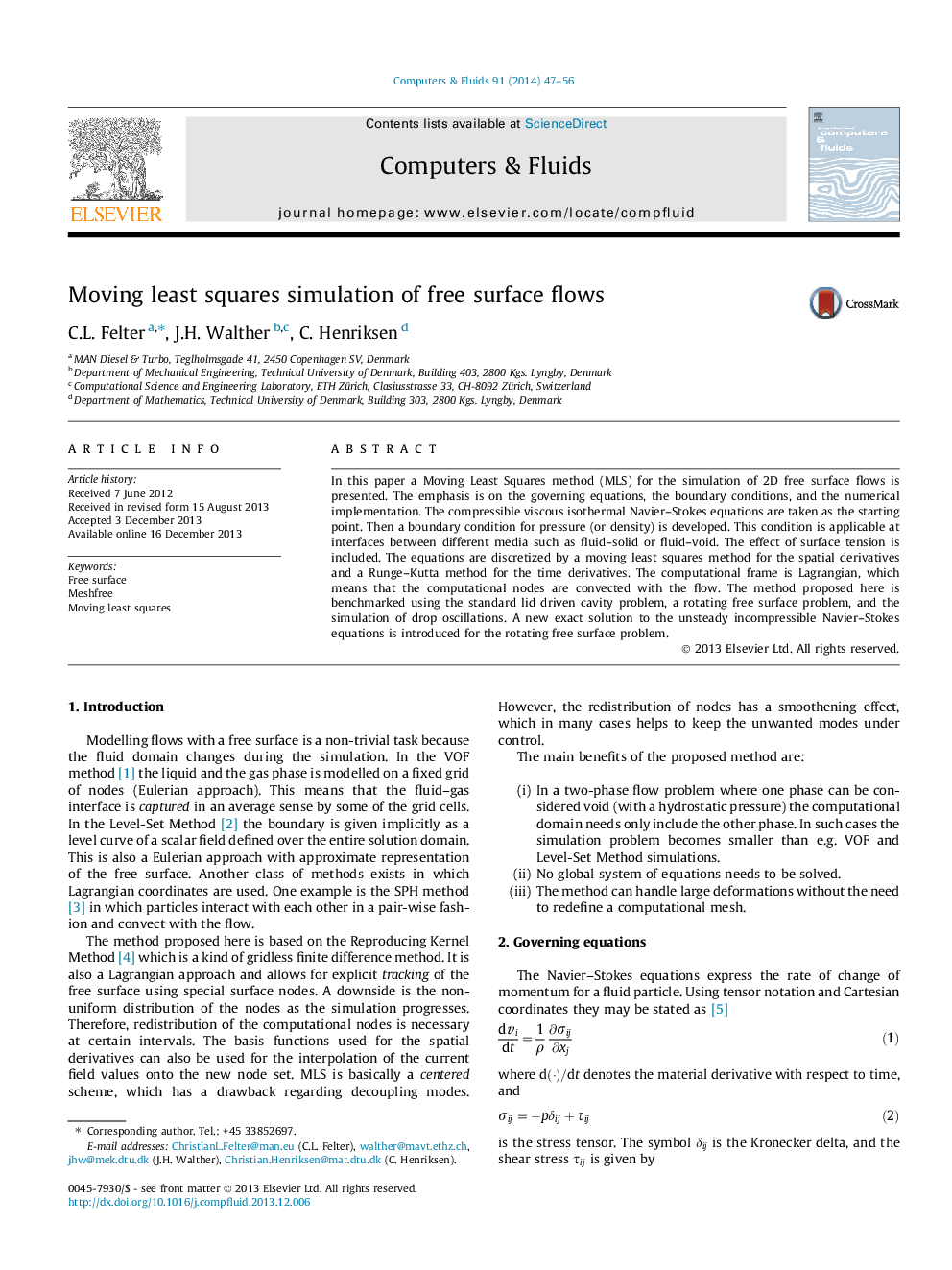| Article ID | Journal | Published Year | Pages | File Type |
|---|---|---|---|---|
| 768554 | Computers & Fluids | 2014 | 10 Pages |
•Meshfree free surface flow model.•Wall and free surface boundary conditions.•Effect of surface tension included.•Three benchmark problems passed.•Analytical solution of incompressible Navier–Stokes equation for free surface problem.
In this paper a Moving Least Squares method (MLS) for the simulation of 2D free surface flows is presented. The emphasis is on the governing equations, the boundary conditions, and the numerical implementation. The compressible viscous isothermal Navier–Stokes equations are taken as the starting point. Then a boundary condition for pressure (or density) is developed. This condition is applicable at interfaces between different media such as fluid–solid or fluid–void. The effect of surface tension is included. The equations are discretized by a moving least squares method for the spatial derivatives and a Runge–Kutta method for the time derivatives. The computational frame is Lagrangian, which means that the computational nodes are convected with the flow. The method proposed here is benchmarked using the standard lid driven cavity problem, a rotating free surface problem, and the simulation of drop oscillations. A new exact solution to the unsteady incompressible Navier–Stokes equations is introduced for the rotating free surface problem.
